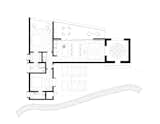Collection by Susan Kock Okie
Favorites
In the remote mountains of Palmichal de Acosta, Costa Rica, local architect María de la Paz Alice, founder of Mazpazz Arquitectura, designed a 100 percent autonomous and self-sustaining home that frames its lush surroundings with a series of geometric openings. The home’s entrance, which the architect refers to as “the vortex,” takes the form of a poured-concrete cube with two prominent circular cutouts. Crystals encrusted in the floor capture and reflect light that passes from the sun and moon through the overhead oculus.
When the house architect Lorcan O’Herlihy originally built for his parents burnt down in a Malibu wildfire, he was given the opportunity to rebuild it as a structure that will stand the test of time. The concrete shell of the house was the biggest fireproofing decision, particularly the roof. The house also features additional passive fire protection elements to prevent ember intrusions, such as spark-arresting screens to protect any vulnerable spots and drought-tolerant landscaping. A sprinkler system wraps the perimeter to saturate the building in an emergency, plus there’s a pool that could provide additional water for firefighting purposes.
139 more saves



















